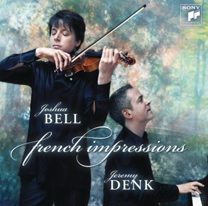Today is one of those clear days when my mind is casting about, in its freedom, for something to be unhappy about. Move on, I tell it (my mind), as if jostling someone on the subway; there is no woe here; but presently relentless motion itself becomes that cause of unhappiness which my mind had sought in stationary, obsessive contemplation. Another day, another Catch-22. I know, for example, I want to choose something to do, I am the child in the candy store, but after choosing, what then? I do not want to do the thing I have chosen.
Today’s earbug is the “2nd theme” from the final movement of Brahms’ Clarinet Trio. It is appropriate that it plays over and over in my head, as the theme has an imperfect subjunctive quality. I await correction of my grammatical insights here, but I believe this tense (which doesn’t really exist in English) refers to things which are “repetitive, ongoing, incomplete.” My wonderful Musicology prof at Indiana, Leslie Kearney, gave a riveting lecture in which she discussed the prevalence of this tense in the Russian language, its relation to Russian culture and history in general, and its applicability to Russian music. Just today, wandering around the city, I found Oblomov by Goncharov prominently displayed at the Three Lives Bookstore, which was one of my prof’s pieces of cultural proof. An odd coincidence: Oblomov is the comic/tragic story of an inactive man, a metaphor for Russian apathy.
This theme I am thinking of, the one from the Brahms trio, is an odd bird. It begins with four singing notes, which could be the beginning of any melody at all. Stop. Then a second, more active, idea is tried; this idea is reworked. No overall arc is yet evident. Then just the beginning of this second idea is tried: stop. Again, the beginning of the second idea: stop. As if unable to continue. Finally, on the “third second thought,” the theme finds an ending, sort of. (And begins again). It is full of unquiet rests, open-ended, frustrated phraselets. Each part of it, even the ending, seems like a new beginning, like a struggle to keep singing. And though the notes change, the theme seems to keep trying to say the same thing–not one long thing, but whatever is hinted at in each fragment as it ends.
It hangs in the brain heavily; I was singing it over and over to myself on the streets of New York, and though I was on solid Manhattan ground, I felt seasick from its fragmentary heaves. My brain was woozy; I bored myself singing it; and yet I kept on. Though it seems to get somewhere, and though it seems to have the phrase structure of a “normal theme,” it is definitely not normal. It is repetitive (obviously), ongoing (it constantly wants to go on, to find the next phrase), and incomplete: though the melody has a cadence and a structure, it is hard to grasp it all in the hand or mind at once; it is made up of fragments, and these fragments “contaminate” the whole.
Brahms, perhaps, had a clear day like mine? This melody is “casting about,” also; in its perpetual, searching motion it finds something reflection and stasis would not. I know my mental pacings will release themselves in some future directed energies, and this makes me want to (with your permission) add to the quasi-grammatical metaphor of imperfect subjunctive the quasi-scientific metaphor of potential energy. The Brahms theme is full of potential energy (try saying that in rehearsal at Marlboro, sometime), which becomes kinetic energy in the ensuing “gypsy” passages.
It would seem, with these kinetic energies of the virtuosic, sweeping coda, that the movement finally addresses and fulfills these lurking, dangerous potential energies of the second theme. I’m not so sure. Though the coda is full of valves to release tension, do any of them finally work? When performing it, at the moment when the audience begins applauding, I find myself looking back over the last line of music, searching for something. I skip back past the last two measure of A minor chords, and also past the two measures before that (the rather conventional cadence I-IV-V-I), in other words past the releases to what must be released: a held D minor chord in the piano. This chord for me quivers with energy, and encapsulates the horrible helplessness of the pianist; how I wish I could “do something” with that chord, rather than just play it and sit there! Once I have chosen how to play it, I must live with it; sit and wish and want is what I must do. I am powerless at this moment of great musical power. I realize as I look at it (and as they applaud, and as I get up to bow with my colleagues) that the F at the top of the chord is a dissonance against the E from the beginning of the melody–with two upward sixths, E-C, A-F, Brahms takes us up this dissonant ninth–and that temporally displaced contradiction is part of what I feel: the D minor chord, though uncontradicted in its moment of existence, though standing alone, defiant, for two and a half measures, is actually in the larger scheme irreconcilable, charged with unstable energies.
As to the final, resolving measures I often feel so what? This is how the great Brahms Clarinet Trio ends–after all its inexpressible longing–with a I-IV-V-I? I long again for the defiant, impossible D minor chord. And I wonder if that is how Brahms intended me to feel.



2 Comments
Many thanks for inspiring me to pull my recording off the shelf and get to know it better. I also needed a break from “Memphis Skyline.”
– Structure Man (Row T1)
Was pointed to your site by klarinet email – I play clarinet in UK (also compose, conduct, and play recorder professionally, adjudicate, write)and enjoyed many performances of Brahms trio with a Czech cellist and UK pianist when we were staff at Chetham’s School of Music, Manchester. I know what you mean about the patience required to let Brahms have his effect on us, and the way this sometimes frustrates. In this trio, the first movement is so fully worked out with long melodies, that maybe he sought a balance with a fragmentary, motivic last movement? Then again, the third movement is also slight (gorgeous dance) and the second is of course one of the finest slow movements in the whole classical repertoire (no argument!). But if we look at the slightly later clarinet sonatas and how he developed tiny motives of sometimes just two notes (as also in first movements of Symphonies 2 and 4), this last movement is essentially “Variations on the 6th and its inversion the 3rd”.
You’ll know that your long D minor chord is his beloved Plagal cadence to the last chord, and that not only does the piano reprise the opening intervals, but also the cellist follows the piano before the last two chords, so the cellist’s duty, I suggest, is to out-do the piano in expressive, dynamic and dramatic weight here to bring the music to it’s conclusion, while the pianist underplays those eighths, rather than goes for broke – Brahms only writes one forte. At this time of his life he was thinking so orchestrally that the piano D minor chord needs somehow to suggest a full wind and brass chord sustained majestically and sonorously (almost with a crescendo!) – I know pianists love to do this!
But the 6th/3rd ideas are so prevalent in this piece that I suggest the rests in the second subject material should not be exaggerated, rather let the tempo flow so effectively through the 6/8 and 9/8 measures that the music breathes naturally – Brahms as ever writes the rhythmic spaces and proportions into his notes without the need for tempo adjustments or rits. Often performers in this section make the gaps interrupt the flow, but perhaps they’re just the music’s own breathing spaces? Right at the start the piano accompaniment includes/echoes the cello’s main tune 1. The sixteenths are a decoration of the interval of the 3rd; the clarinet’s first entry is a decoration of the cello’s tune, using some triplets (number significance is all in Brahms – the Second Symphony, i, he uses lots of 5-note groups, even putting 5/2, 5/4, 5/8, even 5/16 groupings into the 3/4); at measure 46 (letter B in Peters) all the parts include the interval of the 6th, and at E (136) piano left hand includes a 3rd up instead of the 6th down – in fact, there’s hardly a bar without someone playing a 3rd or 6th of some sort, yet the impression is never of mechanical adaptation, rather constant refreshment.
I’ve always enjoyed most the remarkable passage from 77 winding down to the most delicate, mysterious pp dolce through to 105 (D) – absolutely everything is to do with manipulation of the intervals, how they interlock, subtly grading the harmonic changes and keeping up momentum through masterly use of rhythm, interval, melody and harmony so effortlessly intertwined it seems natural, yet also brilliantly invented.
Well, you got me interested – Brahms is the greatest composer. Full Stop. When I was 12 I hated his stuff – bored with the symphonies in concert, couldn’t see what the fuss was about in the clarinet sonatas. But as years of conducting and thinking and growing up have passed, there is none other who so richly combines expression and intellect. I often feel we perform his music too slowly – a mind so quick and brilliant as his in putting patterns together from nuggets of notes deserves to be let loose not held back. The slow movements are gloriously slow, but he often is mercurial in the developmental thinking from note one of the great quick movements that tempo chosen must allow the thinking speed of the audience to aim to match the composer’s. We also need more rehearsal time to get everyone in the ensemble however large to appreciate just how marvellous the constructions are, not just wallow in the romantic idiom.
Anyway, hope you may enjoy many more Brahms’ Trios, all best, Colin (Touchin).